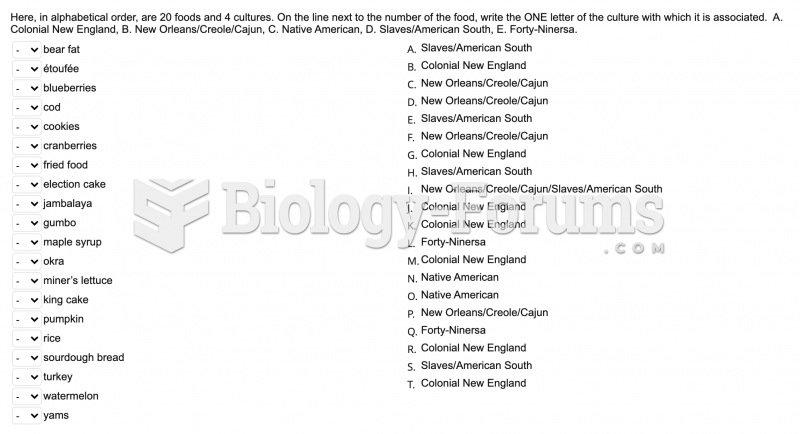|
|
|
Amphetamine poisoning can cause intravascular coagulation, circulatory collapse, rhabdomyolysis, ischemic colitis, acute psychosis, hyperthermia, respiratory distress syndrome, and pericarditis.
Essential fatty acids have been shown to be effective against ulcers, asthma, dental cavities, and skin disorders such as acne.
Adult head lice are gray, about ? inch long, and often have a tiny dot on their backs. A female can lay between 50 and 150 eggs within the several weeks that she is alive. They feed on human blood.
In women, pharmacodynamic differences include increased sensitivity to (and increased effectiveness of) beta-blockers, opioids, selective serotonin reuptake inhibitors, and typical antipsychotics.
Warfarin was developed as a consequence of the study of a strange bleeding disorder that suddenly occurred in cattle on the northern prairies of the United States in the early 1900s.
 Daily changes in photosynthesis and nitrogen fixation gene expression in Synechococcus cultures isol
Daily changes in photosynthesis and nitrogen fixation gene expression in Synechococcus cultures isol
 Women have the role of kinkeeper in almost all cultures. This may cause them to react to stress by ...
Women have the role of kinkeeper in almost all cultures. This may cause them to react to stress by ...





